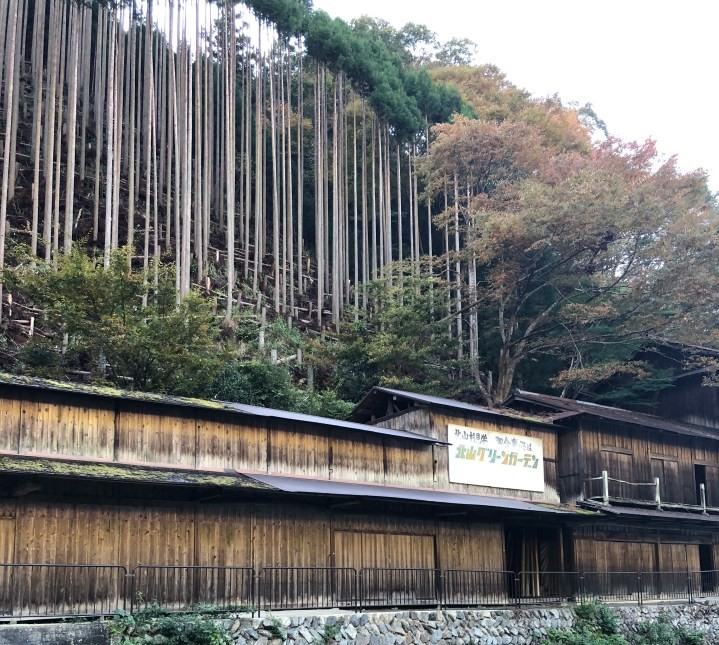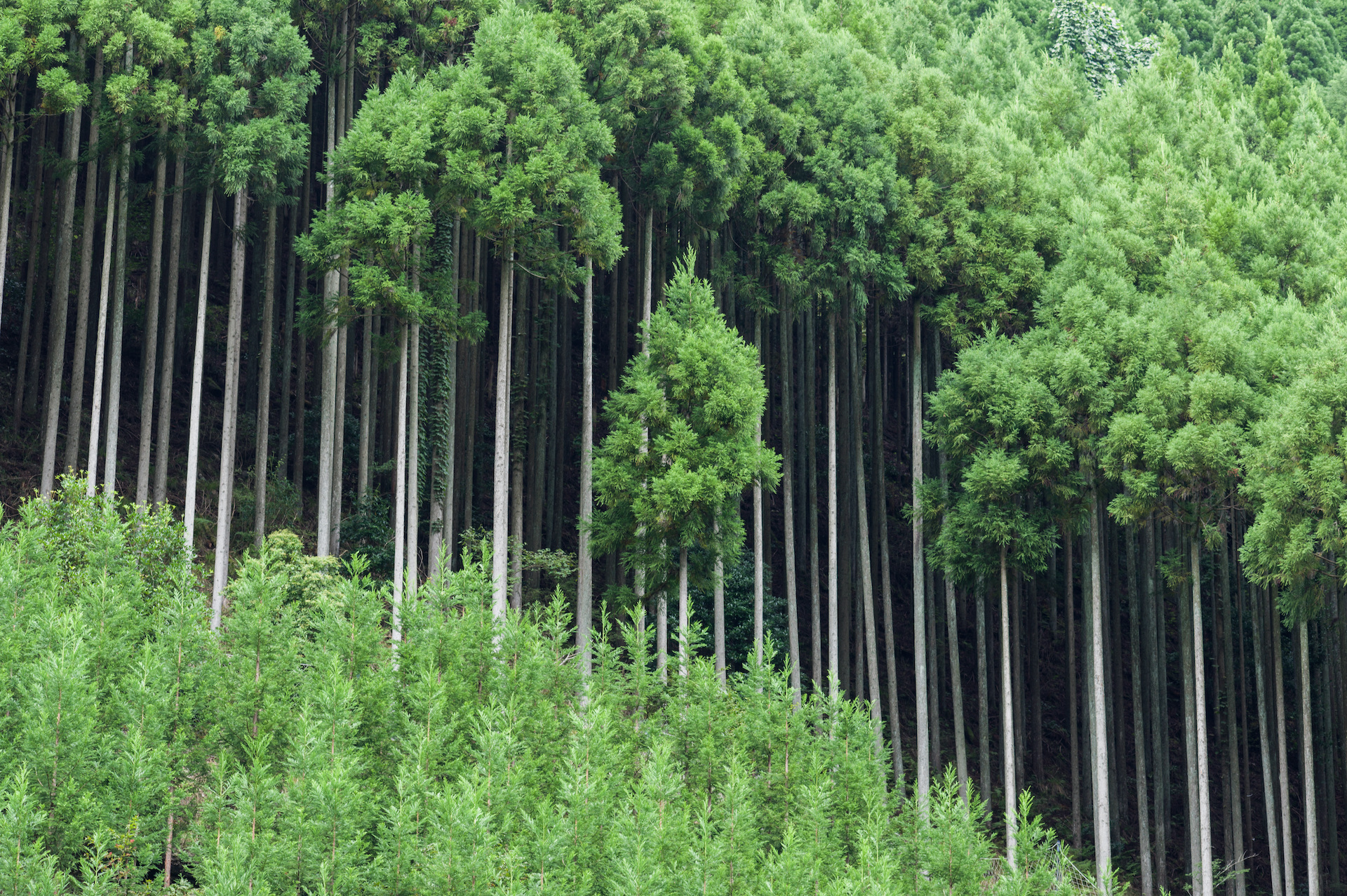Kitamaya, and the Tree Will be Saved
Published on November 30, 2021
In the land of the rising sun, an ancestral practice born in the Kitamaya Mountains lives on.
More than 2000 trees disappear every minute in the world... According to the FAO, nearly 4 billion m3 of wood are harvested annually to satisfy our needs on a global scale. Although wood is an ecological material of choice, its production is rarely sustainable. However, in the Land of the Rising Sun, an ancestral practice born in the Kitayama Mountains lives on. A century-old forestry technique that takes the approach of never cutting down a tree entirely.
Daisugi (台杉), which literally means "cedar platform", is originally a cutting technique that appeared in the 14th century in the Kitayama Mountains (the "Northern Mountains"), in the North of Kyoto. At that time, the Muromachi period, the Japanese people were followers of sukiya zukuri, an architectural style advocating the use of natural materials for the construction and decoration of houses, restaurants, teahouses and inns.
Used on a large scale, the seedlings and raw materials, mainly cedar wood, soon became scarce. The arborists of the time had to innovate and find new methods to avoid deforestation, to keep productiongoing while dealing with a topography that was not propitious to the planting and forestry of cedars (70% of the Japanese territory is mountainous). This is how daisugi was born, an approach that is mainly applied to cedar forestry.
The Kitayama Mountains, surrounded by several districts such as Nakagawa, Ono, and Kumogahata, are considered the cradle of this forestry method for centuries now. However, it is the village of Nakagawa, located in the Nakagawa district, 20 kilometers from Kyoto, that is now considered the heart of the forestry industry in the region, a place now also known as "Sugi no Sato", or "Cedar Village".
Credit: Mesubim
A cedarwood processing warehouse owned by the Kyoto Kitayama Maruta Production Corporative Society.
The art of pruning, a true hymn to verticality
This technique, very similar to the pruning carried out on small to medium-sized bonsai trees, consists of keeping only the vertical stems and thus growing perfectly round and straight trunks (called taruki) on the stump of a cedar. The arborists, or niwashi, prune the shoots every 3 to 4 years to keep the wood absolutely straight and flawless, leaving the cedar leaves only at the top of the tree.
Drawing an almost surreal landscape, it is possible to find more than a dozen "trunks" on the same tree at the same time. These trunks can finally be cut after 20 years and used to make parts of traditional buildings, decorative objects... and even chopsticks! The idea? To remove only the necessary amount of wood without cutting down the entire tree. Then other shoots will grow, and the cycle can be repeated for more than three centuries on the same tree.
From a few stumps, multiple trunks rise up, forming a vertical forest.
This forestry method presents many advantages and benefits for both humankind and nature!
Superior and sustainable wood production:
The daisugi technique, together with the robust nature of cedars, allows new growth to be produce for over 300 years from a single tree. This means that, unlike our usual techniques, the trees do not have to be cut down entirely for production. Moreover, the wood harvested is of higher quality than the trunk it grows on: according to experts, it is on average 140% more flexible and twice as strong as normal wood!
A sustainable culture passed on from generation to generation:
It takes an average of 20 years for foresters to be able to "harvest" the fruits of their labour on trees that are sometimes several hundred years old. It is therefore not uncommon for them to harvest what their grandfathers have planted and in turn to take care of sowing what younger ones will harvest. This practice, which extends over several generations, helps to avoid deforestation in the Kitayama region and to preserve its ecosystem.
Saving space for a higher yield:
As you can see, daisugi allows more wood to be produced in one place. The cedar forest in Kitayama are smaller but still manage to produce more.
This forestry method presents many advantages and benefits for both humankind and nature!
Superior and sustainable wood production:
The daisugi technique, together with the robust nature of cedars, allows new growth to be produce for over 300 years from a single tree. This means that, unlike our usual techniques, the trees do not have to be cut down entirely for production. Moreover, the wood harvested is of higher quality than the trunk it grows on: according to experts, it is on average 140% more flexible and twice as strong as normal wood!
A sustainable culture passed on from generation to generation:
It takes an average of 20 years for foresters to be able to "harvest" the fruits of their labour on trees that are sometimes several hundred years old. It is therefore not uncommon for them to harvest what their grandfathers have planted and in turn to take care of sowing what younger ones will harvest. This practice, which extends over several generations, helps to avoid deforestation in the Kitayama region and to preserve its ecosystem.
Saving space for a higher yield:
As you can see, daisugi allows more wood to be produced in one place. The cedar forest in Kitayama are smaller but still manage to produce more.
The Kyoto Kitayama Maruta Production Corporative Society, based in the Nakagawa village, aims to promote the art of daisugi and its many benefits nationwide and to revitalise the forestry industry in the region. The society has also set up several educational tours for both tourists and locals about Kitayama cedars, including a visit to the Kitayama Cedar Museum, creative workshops, and hikes up the mountain to watch the wood being cut....
Credit: Kyoto Kitayama Maruta
Reflection of a philosophy that is eminently respectful of nature
Although originally a forest management technique, the very special aesthetics of daisugi fascinates and some examples of it can still be seen in Japanese ornamental gardens.
Because above all, in the Land of the Rising Sun, trees are respected. "For Zen Buddhists, the scriptures are inscribed in the landscape," writes Dr. Qing Li in his book Forest Bathing, How Trees Can Help You Find Health and Happiness. "In the Shinto religion, spirits are not separate from nature, they are part of it. They are in the trees, in the rocks, in the breeze, the streams, the waterfalls...". In the Japanese tradition, nature is a supreme value, inherent to human life.
The many benefits of the tree are still reflected today in shinrin yoku. 'Forest bathing' is now a well-known form of therapy that involves “bathing in the atmosphere of a forest through our senses”. Introduced by the Japanese government in the early 1980s to deal with high levels of stress within the population, this natural treatment has since been adopted in many countries around the world. Why is that?
Spending time in nature has been proven to boost immune functions. Breathing in the various compounds or "oils" emitted by trees (phytoncides, terpenoids, pinenes, borneol, linalool, limonenes, or other natural active ingredients) can indeed bring emotional healing, lower blood pressure or reduce stress and aggression in a person. As warmer weather approaches, why not give it a try?





